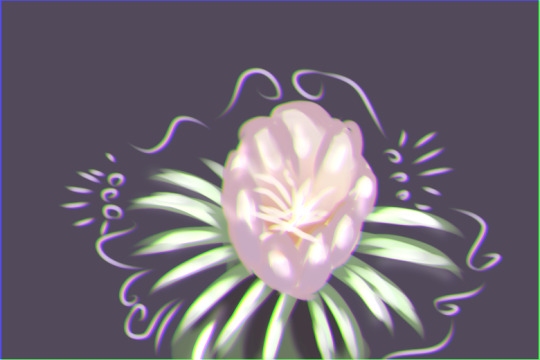#Hylocereus undatus
Text




ドラゴンフルーツの接ぎ木
赤皮白肉種Hylocereus undatusが台木として適していると聞く。
前回黃皮白肉種Hylocereus polyhizusを適当に赤皮白肉種に接いでみたら新芽も出てきて成功していた。前回の接ぎ木は至って簡単。切断して芯を合わせ、ずれないようにアルミ針金(径2mm)を互い違いに突き刺して固定しただけ。接ぎ木テープを断面に巻いたものも巻かなかったものもあるが、どちらも100%で活着していた。
多湿な沖縄なので、袋を被せるのは省いた
新芽は棘から出てくるので、接穂には棘が入るようにするのは大事。
0 notes
Photo

Dragon Fruit Plant Seeds, Pitaya Seeds for Planting Home Garden Yellow, Red, White, Purple B25 Florida and California are grown in organic farms. Our seeds are very easy to cultivate and the survival rate is very high from upto 80%, but due to a lot of natural factors. You will get three varieties of dragon fruit that home gardeners can grow: If lucky, you may get 4 different colors (Yellow, Red, White, Purple) pitaya seeds, Mix color packaged in the bag. We do not guarantee though. 1.Hylocereus undatus. This is the most common variety of dragon fruit, with red or pink skin and white flesh. 2.Hylocereus megalanthus. This dragon fruit has yellow skin and white flesh. 3.Hylocereus costaricensis. This dragon fruit has red skin and red or purple flesh. Large, strangely shaped fruit with sweet flavored pulp. The fruit has recently become a popular flavoring for beverages and there is much interest in growing the fruit as a commercial crop. This is the red pulped variety. The plant is a vining cactus growing either out of the soil or as an epiphyte, with aerial roots. Plants are tolerant of short frosts and can be grown in subtropical climates. Does well in dry conditions. Can be grown as a house plant. Count: ~25 Dragon Fruit Mix (Red, White, Yellow) HEIRLOOM NON-GMO Variety: Dragon Fruit Size: Large, Medium Color name: Yellow, Red & white Features: Diet, medical Cultivator: For home and garden Full-bloom Period: Spring Type: Blooming Tropical Plants Applicable Constellation: Cancer Flowerpot: Excluded Cultivating Difficulty Degree: Very Easy Function: Interest Classification: Novel Cactus Plant Style: Perennial Climate: Tropics This awesome tropical Dragonfruit grows on the Hylocereus cactus, also locally known as the Honolulu queen, whose flowers only open at night. The plant is native to southern Mexico and Central America. Today, it is grown all over the world. It goes by many names, including pitaya, pitahaya, and strawberry pear. The two most common types have bright red skin with green scales that resemble a dragon — hence the name. The most widely available variety has white pulp with black seeds, though a less common type with red pulp and black seeds exists as well. Another variety — referred to as yellow dragon fruit — has yellow skin and white pulp with black seeds. Dragon fruit may look exotic, but its flavors are similar to other fruits. Its taste has been described as a slightly sweet cross between a kiwi and a pear. They can tolerate more humidity and moisture than traditional desert cacti. The fruits are also preceded by nocturnal flowers on the plant. These plants can tolerate partial shade, but they will do best in full sun. Do not allow them to freeze in the winter. Here are 7 health benefits of dragon fruit, all based on evidence. 1. High in Nutrients 2. May Help Fight Chronic Disease 3. Loaded With Fiber 4. Promotes a Healthy Gut 5. Strengthens Your Immune System 6. May Boost Low Iron Levels 7. Good Source of Magnesium Pitaya Seeds, Dragon Fruit Tree, Exotic Outdoor Courtyard Plants, DragonFruit seeds, organic fruit seeds, tropical fruit seeds, Novel Cactus Plant, Tropical Plants, Hylocereus megalanthus, Hylocereus costaricensis, Hylocereus undatus http://springsofeden.myshopify.com/products/dragon-fruit-plant-seeds-pitaya-seeds-for-planting-home-garden-yellow-red-white-purple-b25-1
#Pitaya Seeds#Dragon Fruit Tree#DragonFruit seeds#organic fruit seeds#tropical fruit seeds#Novel Cactus Plant#Tropical Plants#Hylocereus undatus#Exotic Outdoor Plant#organic plants
0 notes
Text
Hylocereus Undatus: Dragon Fruit Growth and Care
Hylocereus Undatus: Dragon Fruit Growth and Care
Hylocereus undatus is a vine-like plant belonging to the cactus family. Commonly used as an ornamental vine cum a fruit crop, Hylocereus undatus is a terrestrial or epiphytic plant that has a very fast growth rate. It is commonly referred to as Dragon fruit, Christ in the Manger, or night-blooming cereus.
Botanical Name
Hylocereus undatus
Common Name
Dragon fruit
Plant Type
Perennial
Flower…
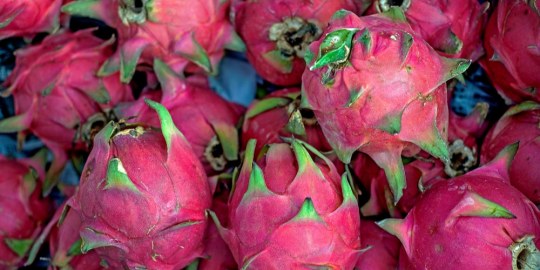
View On WordPress
0 notes
Text
Went to CVS to get a flu shot, came home with the cutest dragonfruit plant (Hylocereus undatus) that is in the absolute CUTEST little flower print cache pot shaped like a teapot.
Now, per my naming conventions, I need a fruity dragon name. Or at least a dragon name in general...
12 notes
·
View notes
Photo
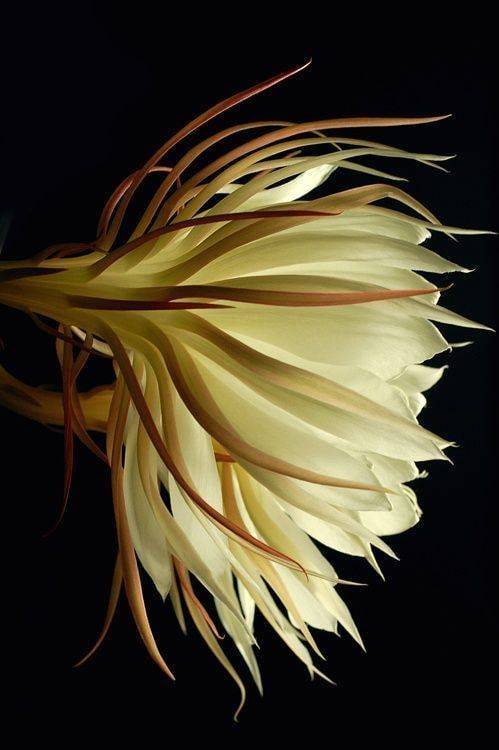
“Midnight Cereus,” photographed by Kerry Harrison. Night-blooming cereus is the common name referring to a large number of flowering ceroid cacti that bloom at night. The flowers are short lived, and some of these species, such as Selenicereus grandiflorus, bloom only once a year, for a single night. Other names for one or more cacti with this habit are princess of the night, Honolulu queen (for Hylocereus undatus), Christ in the manger, dama de noche and queen of the night (which is also used for an unrelated plant species).
https://en.wikipedia.org/wiki/Night-blooming_cereus
46 notes
·
View notes
Photo
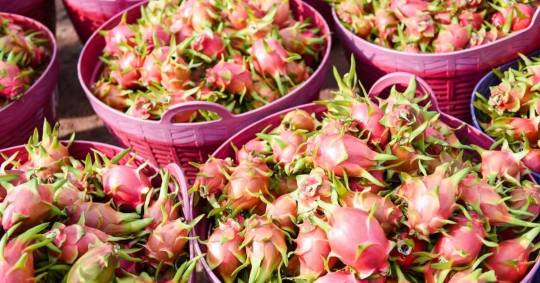
Unknown Facts About Dragon Fruit
Dragon fruit
Pitaya is another name for the dragon fruit (scientific name Hylocereus undatus). It is the fruit of a cactus species. What are the advantages of eating dragon fruit? (Unknown Facts About Dragon Fruit) Winter fruits such as carrots and oranges are less healthy than this fruit.
Many healthful nutrients are found in dragons. A dragon fruit has 60 calories and is high in magnesium, vitamin C, omega-3 fatty acids, and omega-9 fatty acids. This fruit is available in a variety of colors. Red dragon fruit, on the other hand, is more prevalent.
https://classyfact.com/unknown-facts-about-dragon-fruit/
2 notes
·
View notes
Text
How to Pick a Ripe Dragon Fruit?

Title: How to Pick a Ripe Dragon Fruit: A Guide to Choosing the Best Ones
Introduction:
Dragon fruit, also known as pitaya, is a tropical fruit renowned for its vibrant appearance and refreshing taste. However, picking the perfect dragon fruit can be a bit tricky, especially for those unfamiliar with its unique characteristics. In this guide, we'll delve into the art of selecting ripe dragon fruit to ensure you enjoy the juiciest and most flavorful experience.
Understanding Dragon Fruit Varieties:
Before diving into the selection process, it's essential to familiarize yourself with the two main varieties of dragon fruit: the red-fleshed and white-fleshed varieties. Red-fleshed dragon fruit, often referred to as Hylocereus undatus, features a vibrant pink or red interior with black seeds. On the other hand, the white-fleshed variety, known as Hylocereus costaricensis or Hylocereus megalanthus, boasts a sweeter taste and a pale white interior speckled with black seeds.
Now, let's explore the key indicators of ripeness for both types of dragon fruit:
Color:
Red-fleshed dragon fruit: A ripe red-fleshed dragon fruit typically displays vibrant shades of pink or red on its skin. Look for fruits with uniform coloration, avoiding any green patches, as they indicate underripeness.
White-fleshed dragon fruit: Ripe white-fleshed dragon fruit tends to have a golden-yellow hue on its skin. Similar to the red-fleshed variety, opt for fruits with consistent coloring and avoid those with prominent green patches.
Texture:
Gently squeeze the dragon fruit. A ripe fruit should yield slightly to pressure without feeling too soft or mushy. Avoid fruits that are excessively firm or overly soft, as they may be underripe or overripe, respectively.
Firmness:
Press your fingertips against the skin of the dragon fruit. A ripe fruit should have a slight firmness, indicating juiciness. However, it shouldn't feel rock-hard, as this could signify underripeness.
Appearance of Scales:
Examine the scales or spikes on the surface of the fruit. Ripe dragon fruit typically has scales that are well-defined and evenly spaced. Avoid fruits with shriveled or wilted scales, as they may be past their prime.
Fragrance:
While dragon fruit is not known for its strong aroma, a ripe fruit may emit a subtle, sweet fragrance near the stem end. However, keep in mind that the scent may vary depending on the variety and ripeness stage.
Stem Condition:
Check the stem or the remnants of where the stem was attached. A ripe dragon fruit should have a dry, withered stem without any signs of mold or excessive moisture. A fresh-looking stem indicates that the fruit was harvested prematurely.
Size and Weight:
Although size can vary depending on the variety, choose dragon fruits that feel heavy for their size. Heavier fruits often indicate higher water content and juiciness, which are indicative of ripeness.
Conclusion:
Selecting a ripe dragon fruit is a skill that improves with practice and experience. By paying attention to the fruit's color, texture, firmness, appearance of scales, fragrance, stem condition, and size, you can increase your chances of picking a deliciously ripe specimen. Whether you prefer the vibrant red flesh or the sweet white flesh variety, the key is to choose fruits that exhibit the telltale signs of ripeness. So next time you're at the market or grocery store, use these guidelines to select the perfect dragon fruit and savor its exotic flavor to the fullest.
0 notes
Text
Rainha-da-noite – Hylocereus undatus (pitaia)

Nome Científico: Hylocereus undatus
Nomes Populares: Rainha-da-noite, dama da noite, Cardo-ananaz, Cato-barse, Dama-da-noite, Flor-da-lua, Pitaia, Pitaia-vermelha, Pitaia-vermelha-de-polpa-branca
Família: Cactaceae
Categoria: Cactos e Suculentas, Frutas e Legumes, Plantas Hortícolas, Trepadeiras
Clima: Equatorial, Subtropical, Tropical
Origem: América Central, América do Norte, América do Sul, México
Altura: 3 a 6 metros
Luminosidade: Meia Sombra, Sol Pleno
Ciclo de Vida: Perene
Sobre a Rainha-da-noite ou dama da noite (pitaia)
As rainhas-da-noite devem ser cultivadas a pleno sol ou meia-sombra, em substrato leve, próprio para epífitas e misturado com terra de jardim e matéria orgânica.
Não aprecia o frio e deve ser regada periodicamente. Multiplica-se por sementes e estacas.
Esta espécie apresenta caules divididos em artículos e produz grande quantidade de ramos. Com a ajuda de suas raízes aéreas, este cacto é capaz de subir como uma trepadeira ou se fixar ao solo.
Cultivada em condições adequadas, a planta começa a florescer a partir do 3°ano.
Possui flores de grandes dimensões e perfume intenso, produzindo um fruto saboroso e rico em vitaminas.
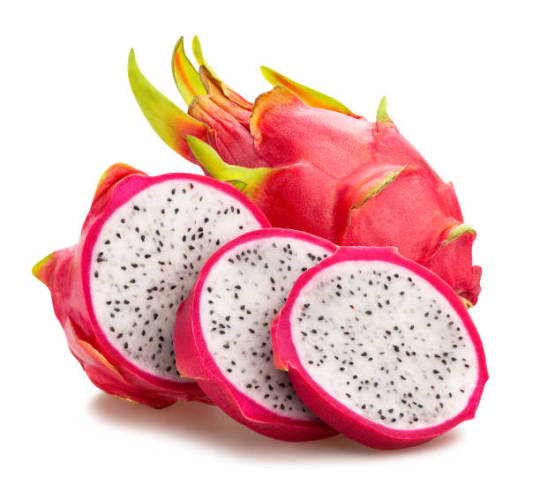
Não há certezas sobre a origem desta planta rainha-da-noite, sendo provavelmente da Índia ou das zonas tropicais do continente americano, desde o México até a Colômbia.
No paisagismo pode ser utilizada tanto em vasos como trepadeira. Devido às grandes dimensões que pode alcançar é mais apropriada para o plantio no solo, junto a uma superfície na qual as raízes aéreas possam agarrar-se.
É ideal para jardins de pedra e pode também ser plantada junto a uma árvore na qual possa enramar-se.

A Dama-da-noite abre suas flores apenas uma vez por ano, e o desabrochar dura somente a noite
Quando a planta recebe a luz do sol, começa a murchar e morre, no máximo, em três dias.
Não suporta temperaturas abaixo dos 13ºC, sendo ideal quando está entre 18 e 32ºC. Caso passe por um longo período de frio pode mesmo morrer.
O solo para seu cultivo deve ser leve com uma mistura de uma parte de terra de jardim uma de composto orgânico e duas de areia.
As regas devem ser espaçadas, pois o excesso de água pode apodrecer a planta. Só deve ser regada quando o solo estiver seco na superfície.
De 3 em 3 anos convém ser replantada.
https://youtu.be/rN1KVgW89Pg
Dicas de cultivo
Recomenda-se replantar a rainha-da-noite (dama da noite) a cada 2 ou 3 anos, dependendo do tamanho da planta.
A Hylocereus undatus (conhecida como pitaia vermelha), é uma espécie de pitaia pertencente ao género Hylocereus e a família Cactaceae, é disseminada na América Latina e cultivada nos quatro continentes, e pode ser encontrada desde Israel até a China.
Nativa de florestas húmidas mantém hábito trepador, pode ser encontrada subindo em árvores ou rochas, no seu habitat natural, utilizando raízes aéreas para se fixar.
As pitayas são conhecidas na cultura Asteca a um longo tempo, este nome significa fruto de escamas, é utilizado tanto para a planta como para o fruto de Hylocereus undatus (Haw.) Britton & Rose.
É conhecida pelo mundo fora por diversos nomes, como dragon fruit, pitahaya, no Brasil o nome vulgar da cultura sofreu modificações, com escrita diferente, Pitaia, mas mantendo a sonoridade.
Noutros locais a sua flor é conhecida como rainha-da-noite.
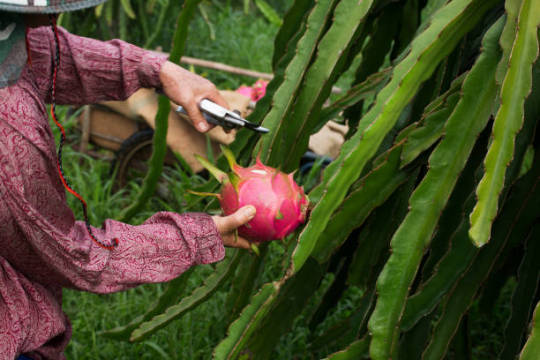
Propriedades da Pitaya
Entre as diversas propriedades da pitaya a que mais se destaca é sua propriedade termogênica que potencializa a queima de gordura favorecendo o emagrecimento.
A fruta mais utilizada para esse fim é a com polpa vermelha.
No entanto as propriedades nutricionais não se diferenciam entre a fruta rosa, a vermelha ou a amarela, seja qual for a pitaya consumida sua alimentação será rica contando com todos os nutrientes da fruta dragão e também: minerais essências, vitamina do complexo B e vitamina C.
Além de dispor das propriedades da pitaya que combatem o mau colesterol.
Curiosidade
A rainha-da-noite flor é uma planta poderosa que tem poderes de realizar desejos.
Segundo a lenda, a pessoa deve fazer um pedido na época da floração da planta, que certamente será atendido.
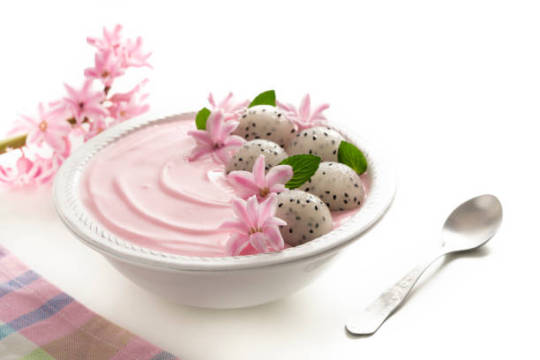
Existem maneiras diferentes de comer pitaya, abaixo encontra uma delas.
Pudim de pitaya
Ingredientes:
½ xícara (chá) de água
½ xícara (chá) de chia
1 sachê de gelatina incolor sem sabor
1 pitaya
1 embalagem de leite de coco
2 colheres (sopa) de açúcar mascavo
Modo de Preparação:
Coloque a água em uma tigela pequena com a gelatina e reserve por 5 minutos.
Em seguida, coloque o leite de coco e o açúcar em uma panela para ferver em fogo médio.
Retire a polpa da pitaya e esprema com um garfo e leve a panela.
Acrescente a gelatina e misture por 1 minuto.
Coloque em um refratário e leve à geladeira por 4 horas.
Read the full article
0 notes
Text
I think it's getting to be time to separate the dragon fruit. They're all growing second stems from their bases, so it's getting cramped.

I don't know if I heard it from someone, or if I dreamed it up, but I have this idea that propagating them will cause them to mature faster. From a botanical standpoint, this makes little sense, but I think it's worth attempting on one of them just to see what happens.
Side note: Yesterday I found out that in 2017 a study proved that the genus Hylocereus, which contained dragon fruits, was just a subset of Selenicereus, the moonlight cacti. So my dragon fruits are most accurately known as Selenicereus undatus.
0 notes
Text
Kako uzgajati zmajevo voće
Zmajevo voće (Hylocereus undatus) je egzotično i ukusno voće koje se može uzgajati kod kuće uz minimalan trud. Biljka je kaktus, pa uspijeva u vrućim, suhim klimama i ne treba joj puno vode da bi preživjela. Plodovi su krupni i jarke boje, slatkastog ok...
#Sobnebiljke
0 notes
Text
Kalori Buah Naga : Nutrisi dan Manfaat [LENGKAP]
Buah naga atau dalam bahasa latin disebut Hylocereus undatus, merupakan buah dari jenis tanaman kaktus.Buah naga sendiri berasal dari daratan Meksiko, Amerika selatan dan Amerika tengah yang saat ini populer dibudidayakan dinegara Asia termasuk Indonesia.
continue here
0 notes
Link
0 notes
Link
Check out this listing I just added to my Poshmark closet: NEW Vegan Animal Cruelty Free Booni doon Calm Cleansing Capsules Refillable Jar.
0 notes
Text
BAO DRIED HYLOCEREUS UNDATUS FLOWER 6oz
BAO DRIED HYLOCEREUS UNDATUS FLOWER 6oz

View On WordPress
0 notes

